For a no-sweat, do-anywhere workout that will clear your mind and energize your body, look no further than qigong.
With Chinese roots dating back more than 4,000 years, qigong (pronounced “chee-GUNG”) is broadly defined as the integration of physical postures, breathing techniques, and focused intentions.
Many qigong variations exist, including external forms practiced to heal others and internal approaches focused on cultivating self-balance. Among these are gentle, meditative practices and intensely physical ones, such as certain martial arts.
“The greatest gift qigong can give is restoring energy,” says John Du Cane, a renowned qigong teacher who began his own practice in the 1970s and regularly hosts instructor workshops and certification programs.
Du Cane suggests the following exercises to help restore your energy. They are suitable for most anyone and require no equipment. He recommends practicing the sequence daily for optimal results, which include improved quality of movement, balance, flexibility, core strength, and joint mobility.
When you first practice qigong, your movements might seem jerky and your breathing shallow. “Take it one step at a time and you’ll get better at it,” Du Cane says. “It’s like learning to play the piano: Don’t expect to knock out a sonata the first time.”
1. Endurance Activator
Enhances leg strength and overall endurance.
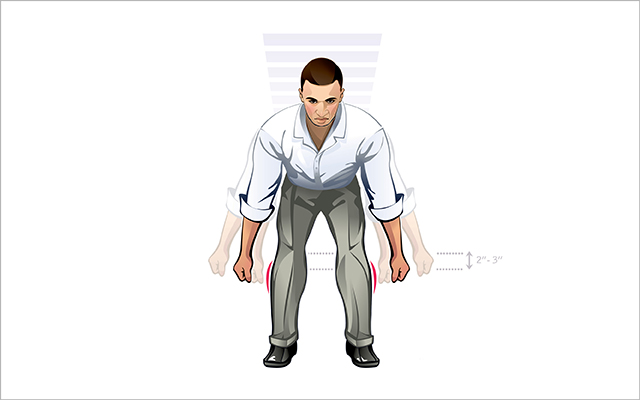
- Stand with your feet hip width apart and arms relaxed at your sides. Make fists with both of your hands.
- Bend your knees and hinge at the hips to fold forward until your hands are about 2 to 3 inches below your knees. Avoid rounding your back.
- Tap vigorously against the outsides of your shins, aiming for 80 to 100 repetitions.
- Breathe naturally through your nose and keep your attention focused on the area you are tapping.
2. Wall Squat
Improves leg strength, relaxes the hip and pelvic region, and can help prevent lower-back pain.
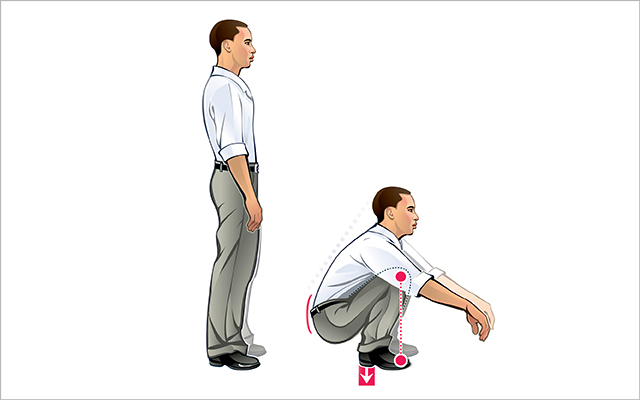
- Stand facing a wall. Inhale as you slowly sink into a squat, using the wall to keep your weight back on your heels. Adjust foot width and angle to find your deepest squat.
- At the bottom of the squat, focus your attention at the base of your spine (just above your tailbone).
- As you rise, exhale and run your attention up the back of your body to the top of your head and then down the front.
- Continue for five to 10 minutes, moving as slowly as possible.
3. Coiling Recharge
Uses the hands to direct energy in a spiral pattern. Improves fascial health while developing energy, power, and a sense of well-being.
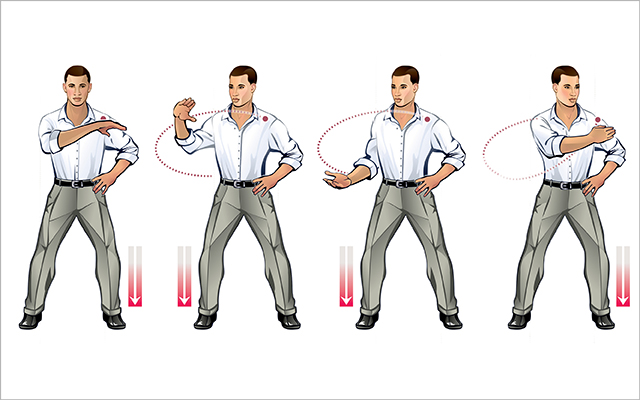
- Stand with your feet wider than your hips, your left hand on your left hip, and weight shifted onto your left leg. Bend your right elbow and bring your right hand in front of your left shoulder, with your palm facing down. Keep your shoulders and lower abs relaxed.
- Shift your weight onto your right leg. As you do this, slowly move your right hand to the right, rotating your wrist so your palm faces away from you. Once your hand is slightly outside of your right shoulder, move it down until it’s at your waist, rotating your wrist until your hand is palm up like you’re cupping something. Simultaneously turn 30 degrees to your right and sink down. Shift your weight back onto your left leg. Exhale as you circle across and down.
- Slowly continue making a circle, bringing your right hand back to shoulder height with your palm facing down. Rise slightly and turn your body back 30 degrees to face forward. Inhale as you circle up and return to the starting position.
- Repeat this circular movement for three to five minutes before switching to the other side.
4. Crane Stands on One Leg
Develops balance and agility, gently stretches the ligaments, improves circulation, and releases the spine.
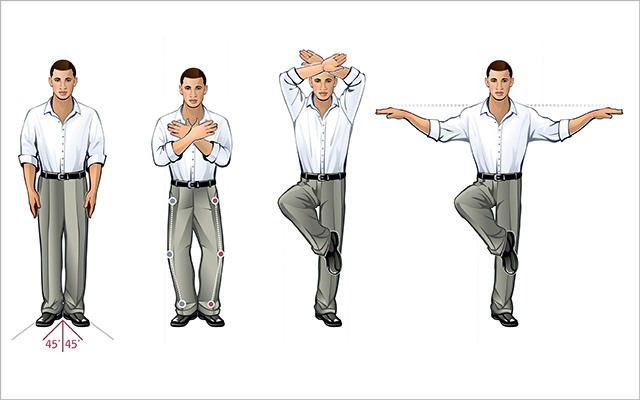
- Stand with your heels touching and your feet turned out at 45 degrees. Bend your knees slightly and tuck your hips under. Relax your abdominal area, upper chest, and shoulders. Focus your attention in your lower abdominal area throughout this exercise.
- Inhale as you circle your arms in front of your body and cross them at chest height with your palms facing in. As your hands move in front of your chest, sink your weight onto your left leg.
- Raise your hands to come just over your head, turning your palms out as they pass your throat.
- While you are raising your arms over your head, lift your right foot and rest it against your left knee.
- Continue circling your arms to the sides of your body as you turn your palms face down. Keep your arms extended, with elbows bent slightly and hands at shoulder level.
- Exhale as you lower your arms back down to your sides and sink your weight onto your right leg.
- Repeat the sequence on the other side. Perform at least five repetitions on each side.
5. Standing Still With Absorbing
Improves efficiency of breathing and encourages the body to contract and expand.
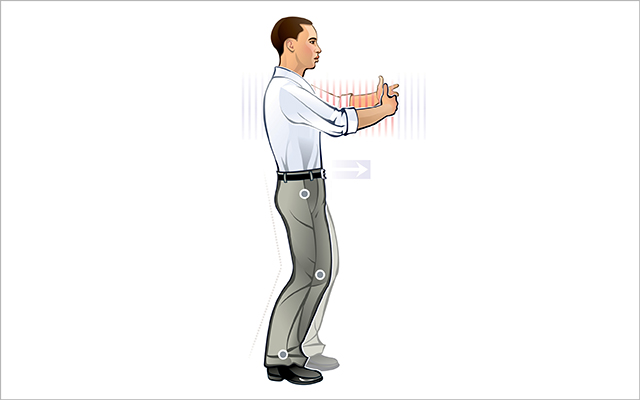
- Stand with your feet hip width apart and bend your knees slightly, keeping your hips tucked forward. Extend your arms at chest height, as if you were embracing someone. Your arms should stay in the same place throughout the exercise.
- As you inhale and your abdomen expands, you should feel as if your breath is inflating an internal balloon. Meanwhile, imagine you are pulling energy in toward the core of your body.
- As you exhale, imagine that you are sending energy back out of your body.
- Continue for two to five minutes.
See all the moves in action at The Qigong Workout With Jen Sinkler and John Du Cane (Video).


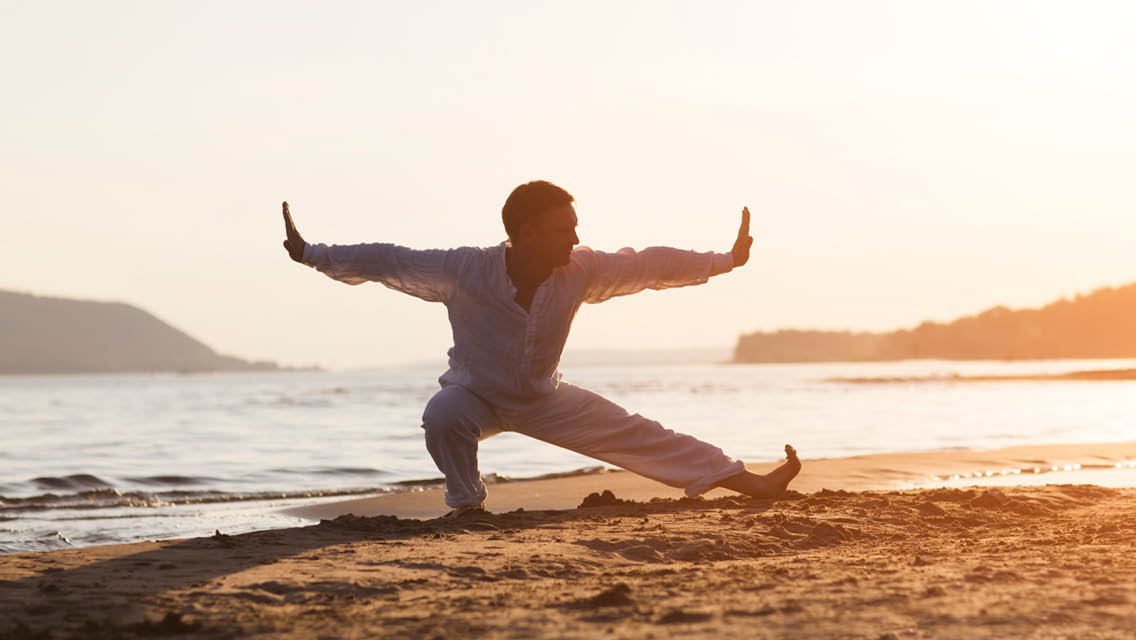

This Post Has 0 Comments